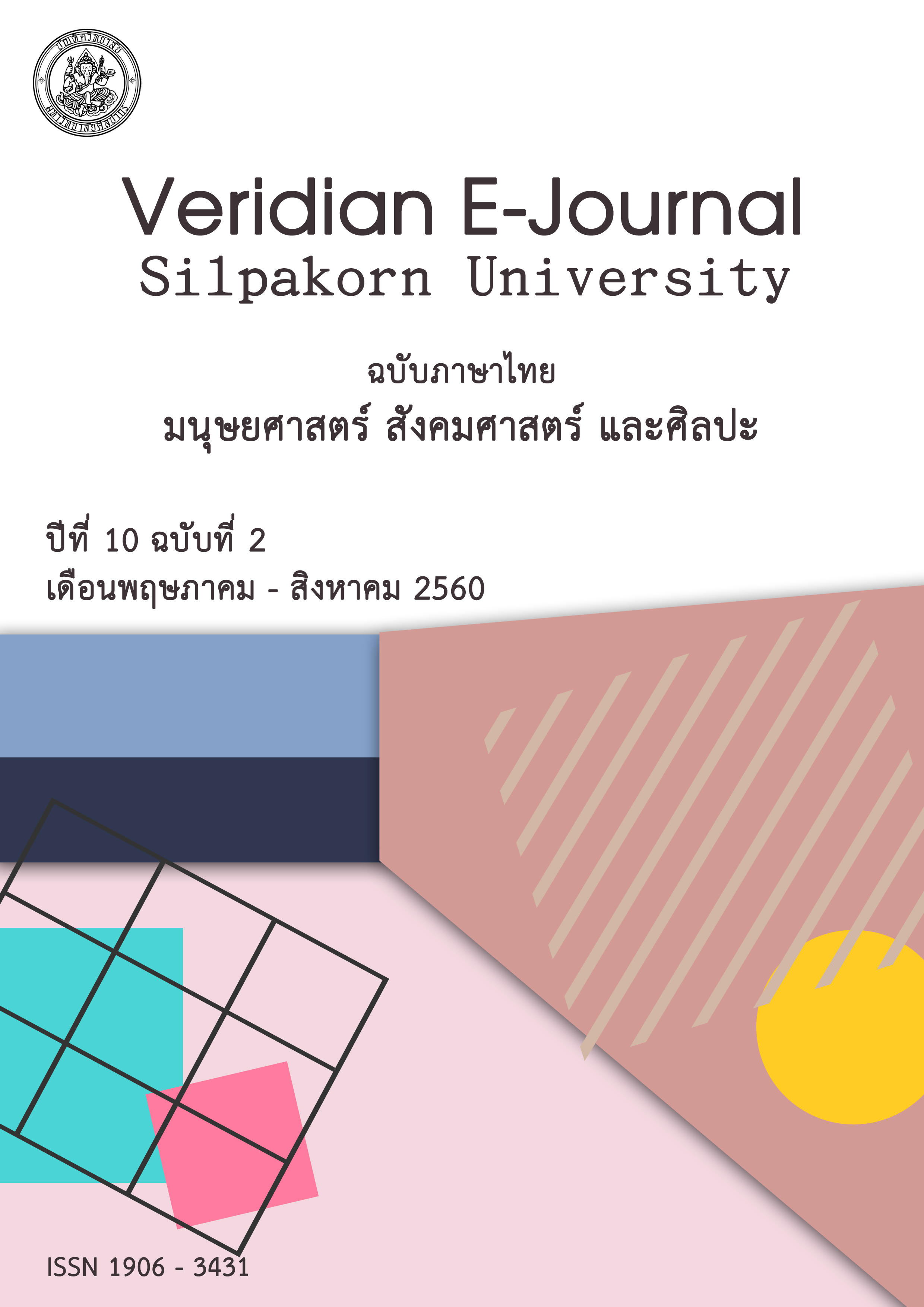การวิเคราะห์องค์ประกอบการเป็นองค์กรแห่งความสุขของสถาบันการศึกษาไทย
Main Article Content
Abstract
การวิจัยครั้งนี้มีวัตถุประสงค์ เพื่อวิเคราะห์องค์ประกอบของการเป็นองค์กรแห่งความสุขของสถาบันการศึกษาไทย มีวิธีดำเนินการวิจัยดังนี้ ขนาดตัวอย่างที่ใช้ในการวิจัย โดยการคำนวณจากสูตรของ Hair et al. 2010 (อ้างถึงใน นงลักษณ์ วิรัชชัย, 2555) งานวิจัยครั้งนี้มีตัวบ่งชี้ทั้งสิ้น 45 ตัวบ่งชี้ จึงกำหนดอัตราส่วนระหว่างหน่วยตัวอย่างต่อจำนวนพารามิเตอร์ (ตัวแปร) เป็น 10 ต่อ 1 โดยประกอบด้วยบุคลากร ในสถาบันการศึกษาขั้นพื้นฐาน 450 คนและบุคลากรในสถาบันการศึกษาระดับอุดมศึกษา 450 คน รวมทั้งสิ้นจำนวน 900 คน เครื่องมือที่ใช้ในการวิจัยครั้งนี้เป็นแบบสอบถาม จำนวน 52 ข้อ วิเคราะห์หาค่าความตรงของเครื่องมือของผู้เชี่ยวชาญด้วยวิธีการหาค่าสัมประสิทธิ์ความสอดคล้อง (Index of Item – Objective Congruence : IOC) และค่าความเที่ยงของเครื่องมือด้วยวิธีคำนวณหาค่าสัมประสิทธิ์ความสอดคล้องภายใน ด้วยสูตรแอลฟาของครอนบาค โดยมีค่าความเที่ยงของเครื่องมือของข้อคำถาม เกี่ยวกับการเป็นองค์กรแห่งความสุขของสถาบันการศึกษา เท่ากับ 0.935 และวิเคราะห์ข้อมูลตัวชี้วัดองค์ประกอบการเป็นองค์กรแห่งความสุขของสถาบันการศึกษาไทย โดยใช้เทคนิควิธีการวิเคราะห์องค์ประกอบเชิงสำรวจ วิเคราะห์ข้อมูลด้วยสถิติดังนี้ ค่าความถี่ ค่าเฉลี่ย ค่าร้อยละ ค่าความเบี่ยงเบนมาตรฐาน ค่าสถิติของไคเซอร์-ไมเยอร์-ไอลคิน ค่าสถิติของบาร์ทเลทท์ ค่าไอเกน ค่าความแปรปรวนสะสม
ผลการวิจัยพบว่าองค์ประกอบการเป็นองค์กรแห่งความสุขของสถาบันการศึกษาไทย มีจำนวน 9 องค์ประกอบ เรียงตามลำดับความสำคัญจากมากไปหาน้อยได้แก่ 1) ความสุขทางด้านจิตใจ 2) ความสุขทางด้านสังคม 3) ความสุขทางด้านการเงิน 4) ความสุขทางสมอง 5) ความสุขของครอบครัว 6) ความสุขทางด้านร่างกาย 7) ความสุขจากการปฏิบัติต้นอยู่ในระเบียบ 8) ความสุขทางวัฒนธรรม 9) ความสุขจากการผ่อนคลาย สามารถอธิบายองค์ประกอบของการเป็นองค์กรแห่งความสุขของสถาบันการศึกษาไทยได้ร้อยละ 65.166
The objective of this research was to analyze indicators of Happy workplace of Thai Educational Institutions. Details of research methodology were, as follow. The sample size of this research was determined by proposed formula of Hair et al. 2010 (as cited in Wiratchai N., 2012). This research contained 45 indicators, therefore, the author specified ratio between sample and amount of parameters (variables) at 10 to 1. The samples of this research were comprised of 450 personnel from elementary educational institutions and 450 personnel from higher educational institutions; 900 samples in total. The tool the author used for this research was a 52-items questionnaire. The author analyzed the tool’s validity by using the Index of Item – Objective Congruence (IOC) and analyzed the tool’s reliability by using coefficient of internal consistency. By using Cronbach’s Alpha, the author calculated the tool’s reliability, namely, the questionnaire on being a happy workplace of thai educational institutions, at 0.935. The author then analyzed factors for being a happy workplace of thai educational institutions by using exploratory factor analysis; and by analyzing the data by using the following statistics, namely, frequency, average, percentage, standard deviation, Kaiser-Meyer-Olkin (KMO) statistic, Bartlett statistic, Eigen values, and cumulative variance.
This research revealed the 9 factors in total for being a happy workplace of Thai educational institutions, by using factor analysis and orthogonal rotation with Varimax Method; these factors were sorted by their respective Eigen values descendingly, as follow: 1) mental happiness, 2) societal happiness, 3) financial happiness, 4) brain happiness,5) family happiness, 6) physical happiness, 7) regulation abiding behavior happiness,8) cultural and religious happiness, and 9) relaxative happiness. This research was able to explain the factors of being a happy workplace of Thai educational institutions at 65.166 percents.
